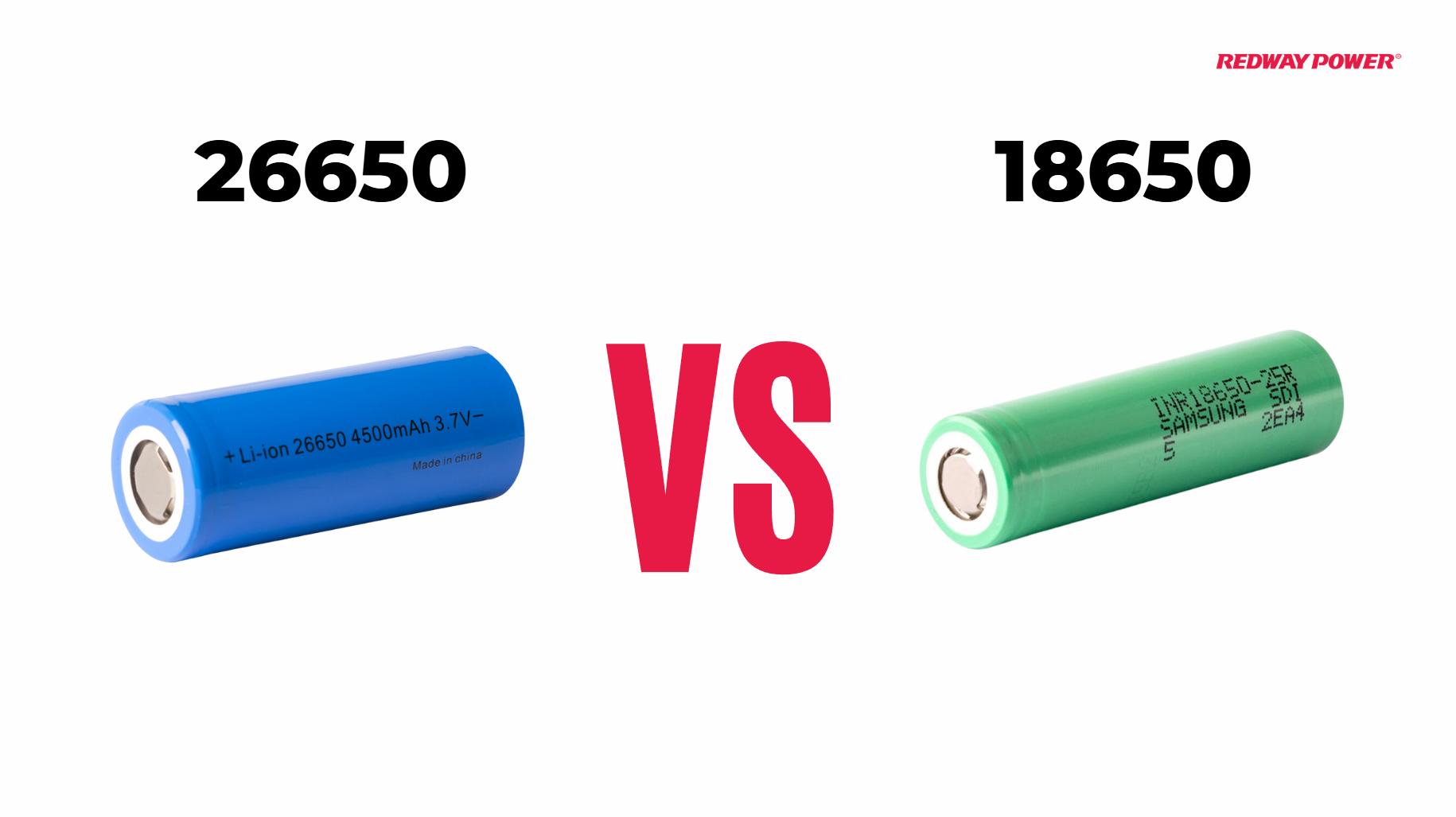26650 vs 18650 Batteries: Which is Superior for Your Needs?
The choice between 26650 and 18650 batteries depends on your application. The 26650 offers higher capacity (up to 5000mAh) and longer runtimes, making it ideal for high-drain devices. In contrast, the 18650 is smaller and lighter, suitable for compact devices where space is a concern. Evaluate your power requirements to determine the best fit.
In the evolving world of battery technology, 26650 and 18650 batteries frequently come up in discussions regarding energy capacity, energy density, and application suitability. Choosing between these two battery types depends largely on specific requirements related to performance and physical constraints. In this comprehensive guide, we will delve into the nuances of 26650 and 18650 batteries, helping you understand their unique features and determine which battery type is best suited for various applications.
Understanding Battery Specifications
What is a 26650 Battery?
The 26650 battery is a type of lithium-ion battery characterized by its larger size, specifically a diameter of 26 mm and a length of 65 mm. This larger size enables the 26650 battery to store more energy, which translates into extended battery life for devices requiring sustained power.
Energy Capacity and Performance
The 26650 battery excels in terms of energy capacity due to its physical dimensions. Typically, 26650 batteries offer capacities ranging from 3000mAh to 6000mAh. This higher capacity is particularly advantageous for devices that demand prolonged operation without frequent recharging. For example, high-drain devices such as flashlights, power tools, and electric bikes benefit significantly from the enhanced energy reserves of a 26650 battery.
What is an 18650 Battery?
The 18650 battery is a widely used lithium-ion battery with a diameter of 18 mm and a length of 65 mm. Despite its smaller size compared to the 26650, the 18650 battery is known for its high energy density and robust power output.
Energy Density and Compactness
The 18650 battery is renowned for its high energy density, which means it packs a significant amount of power into a compact size. With typical capacities ranging from 1800mAh to 3500mAh, the 18650 battery provides a balance of power and portability. This makes it ideal for applications where compactness and lightweight characteristics are crucial, such as in laptops, handheld devices, and small electronic gadgets.
Comparative Analysis: 26650 vs 18650
Energy Capacity
When it comes to energy capacity, the 26650 battery clearly holds the advantage due to its larger size. The increased capacity of 26650 batteries ensures that they can store more energy, which is essential for devices requiring extended operational time. This makes 26650 batteries particularly suitable for:
- High-drain flashlights: Extended use without frequent recharges.
- Electric bikes and scooters: Longer rides between charges.
- Power tools: Sustained performance during demanding tasks.
Energy Density
On the other hand, the 18650 battery shines in energy density. Its compact form factor allows it to deliver a considerable amount of power relative to its size. This makes 18650 batteries ideal for applications where space is at a premium:
- Portable electronics: Laptops, cameras, and smartphones.
- Consumer electronics: E-cigarettes and small LED flashlights.
- Wearable devices: Fitness trackers and smartwatches.
Size and Weight
The physical dimensions of 26650 and 18650 batteries impact their suitability for different devices. The larger size of the 26650 battery offers more room for energy storage, but it also means it is bulkier and heavier compared to the 18650. This can be a crucial factor for devices where weight and size constraints are significant. Conversely, the smaller 18650 battery excels in applications where a compact and lightweight design is preferred.
Application Suitability
- 26650 Batteries: Best suited for devices that benefit from high energy capacity and longer runtime. Examples include large-scale applications like high-powered flashlights, electric vehicles, and heavy-duty power tools.
- 18650 Batteries: Ideal for applications that prioritize compactness and high power density. This includes a broad range of consumer electronics like laptops, small gadgets, and portable power sources.
Choosing the Right Battery: Key Considerations
Device Requirements
The choice between a 26650 and an 18650 battery largely depends on the specific requirements of your device. If your device demands extended operation and can accommodate larger battery sizes, the 26650 battery might be the preferable option. Conversely, if space and weight are at a premium, and you need a battery that delivers high power in a smaller form factor, the 18650 battery is likely the better choice.
Power and Performance
Evaluate the power needs of your device and the performance requirements. Devices requiring high power output and long battery life benefit from the 26650’s larger capacity. For applications where efficiency and compact power delivery are essential, the 18650 battery’s energy density makes it the superior choice.
Physical Constraints
Consider the physical space available for the battery within your device. Larger devices with ample space can accommodate the 26650 battery, while smaller devices will find the 18650 battery more appropriate due to its compact size.
Conclusion
In conclusion, both 26650 and 18650 batteries offer distinct advantages depending on the specific needs of your application. The 26650 battery’s larger size provides superior energy capacity and is ideal for high-drain devices that require long-term power. Meanwhile, the 18650 battery excels in energy density, making it perfect for applications where compactness and high power output are key considerations. By understanding the unique features and applications of each battery type, you can make an informed decision that best suits your device’s requirements.

